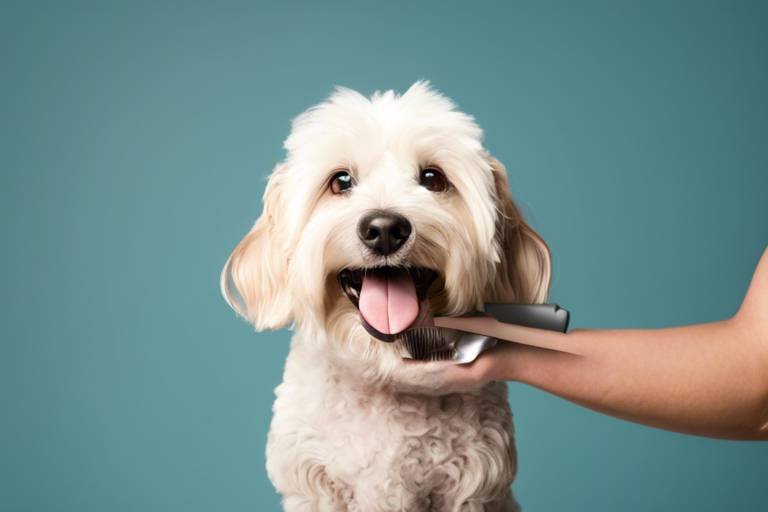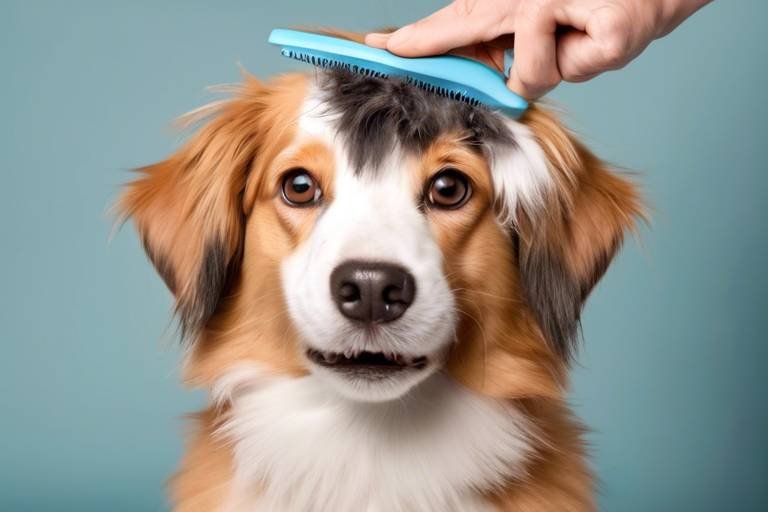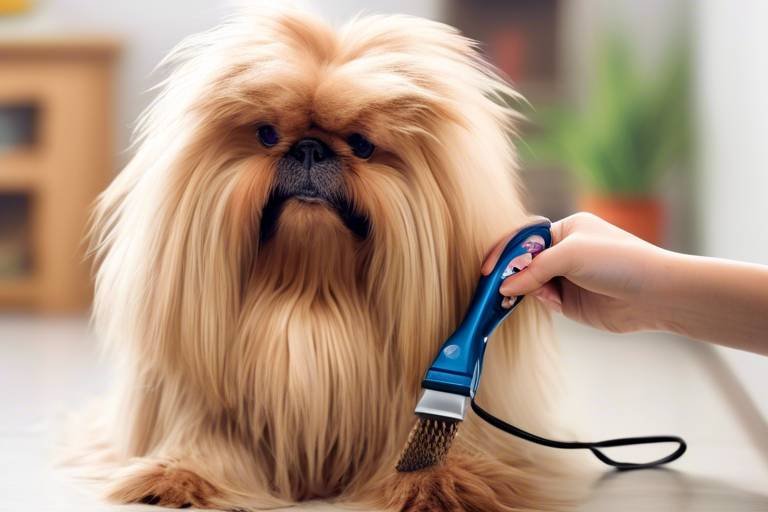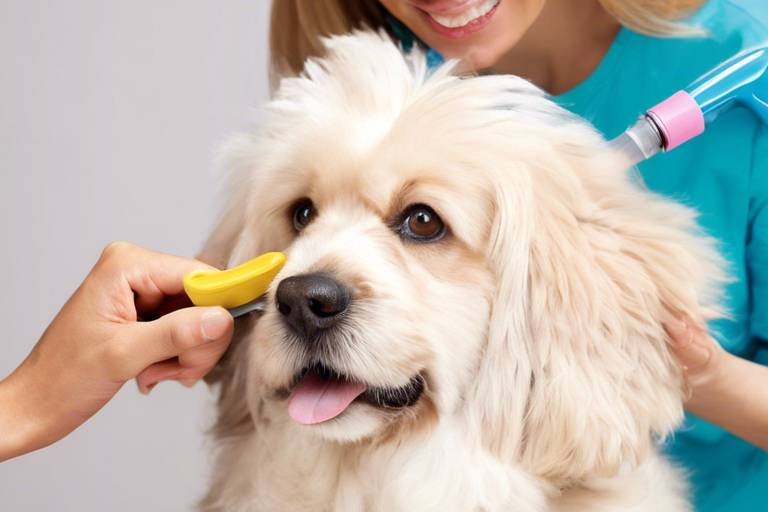How to Choose the Right Grooming Class for You and Your Pet
Choosing the right grooming class is not just about picking a random course; it's about finding an experience that resonates with both you and your furry friend. Just like humans, pets have their own unique personalities and grooming needs, which can vary immensely based on factors like breed, coat type, and individual temperament. Imagine trying to fit a square peg into a round hole—if you select a class that doesn’t align with your pet’s specific requirements, you might end up frustrated and overwhelmed. So, how do you avoid this pitfall? Let’s dive into a few essential considerations that will guide you in making the best choice for your grooming journey.
Every pet is as unique as a fingerprint, and their grooming needs are no exception. For instance, long-haired breeds like the Persian cat or the Golden Retriever require different grooming techniques compared to short-haired breeds like the Beagle or the Boxer. Understanding your pet's specific grooming requirements is crucial for selecting a class that will not only educate you but also keep your pet comfortable and happy. You might think, "How do I even begin to assess these needs?" Start by observing your pet’s coat condition, skin health, and any behavioral quirks that may surface during grooming. This initial assessment will provide you with valuable insights as you explore various grooming classes.
Grooming classes come in all shapes and sizes—from basic introductory courses to advanced training sessions that delve into intricate grooming techniques. It’s essential to understand the different types available so you can select one that aligns with your skill level and future goals. Are you a complete novice looking for foundational skills, or are you an experienced groomer aiming to refine your techniques? Knowing where you stand will help you narrow down your options effectively.
One of the significant decisions you'll face is whether to enroll in a group class or opt for private lessons. This choice can significantly impact your learning experience. Group classes often foster a sense of community, allowing you to connect with other pet owners and share experiences. However, if your pet has specific behavioral issues or if you prefer a more personalized approach, private lessons might be the way to go. Think of group classes as a bustling marketplace where everyone learns together, while private lessons are like a tailored shopping experience, designed just for you and your pet.
Group classes can be an excellent way for both pets and owners to socialize. They provide a supportive environment where you can learn from each other’s experiences. Plus, they are generally more cost-effective, making them a popular choice for budget-conscious pet owners. You’ll find that sharing the learning journey with others can make the experience more enjoyable and less daunting.
On the flip side, private lessons offer a level of personalized attention that group classes simply cannot match. If your pet has specific grooming challenges, such as anxiety or aggression, having a dedicated instructor can make a world of difference. You’ll receive tailored instruction that caters to both your needs and your pet’s unique personality, allowing for a more focused and effective learning environment.
In today’s digital age, online learning has become increasingly popular, offering flexibility that traditional in-person classes may lack. However, both options have their unique advantages. Online classes allow you to learn at your own pace, fitting into your schedule seamlessly. In contrast, in-person classes provide hands-on experience and immediate feedback from instructors. Consider your lifestyle and learning preferences when making this decision, as it can significantly impact your overall experience.
Once you've narrowed down your class options, it's time to evaluate the instructors themselves. The experience and credentials of your instructor play a pivotal role in ensuring a quality education. Look for instructors with recognized certifications and extensive experience in the field. This will not only enhance your learning experience but also give you peace of mind knowing that you’re being taught by someone who truly knows their stuff.
Instructors with relevant certifications, such as those from the National Dog Groomers Association or similar organizations, are more likely to provide valuable insights and techniques. Their extensive experience can help you navigate common grooming challenges, making your learning process smoother and more effective. Remember, a well-qualified instructor can be the difference between a good grooming class and a great one!
Every instructor has their unique teaching style, and finding one that resonates with you is essential. Some may take a more structured approach, while others might prefer a hands-on, experiential style. Evaluating their philosophy towards grooming and training can help you find a class that aligns with your learning preferences. Ask yourself: Do you thrive in a more laid-back environment, or do you prefer a structured curriculum? Understanding this can greatly enhance your educational experience.
Let’s face it—budgeting for grooming classes is crucial. Costs can vary widely based on various factors such as location, instructor experience, and class duration. Understanding these factors can help you make an informed decision without compromising on quality. You might find yourself wondering, "How much should I realistically expect to spend?"
Class fees can range from affordable to quite pricey, depending on where you live and the reputation of the instructor. On average, you might encounter fees that look something like this:
| Class Type | Average Cost |
|---|---|
| Group Class | $50 - $150 |
| Private Lesson | $75 - $200 |
| Online Course | $30 - $100 |
Breaking down these costs can help you find a class that fits your budget while still providing quality education.
As you budget, be aware of potential hidden costs that could sneak up on you, such as equipment fees or additional materials. Knowing these can prevent unexpected expenses during your grooming journey. Always ask upfront about what’s included in the class fee and if there are any additional costs you should be prepared for. Transparency is key!
Q: How do I know if a grooming class is right for my pet?
A: Assess your pet's specific grooming needs and compare them with the class offerings. Look for classes that cater to your pet's breed and temperament.
Q: Are online grooming classes effective?
A: Yes, online classes can be very effective, especially if they offer interactive components and access to experienced instructors.
Q: What should I bring to a grooming class?
A: Typically, you’ll need basic grooming tools, a notebook, and a willingness to learn. Check with your instructor for specific requirements.
Q: How long do grooming classes usually last?
A: Class durations can vary, but most sessions last between 1 to 3 hours, depending on the material covered.
Choosing the right grooming class for you and your pet may seem daunting, but with the right information and guidance, you can make an informed decision that leads to a fulfilling and educational experience. Happy grooming!
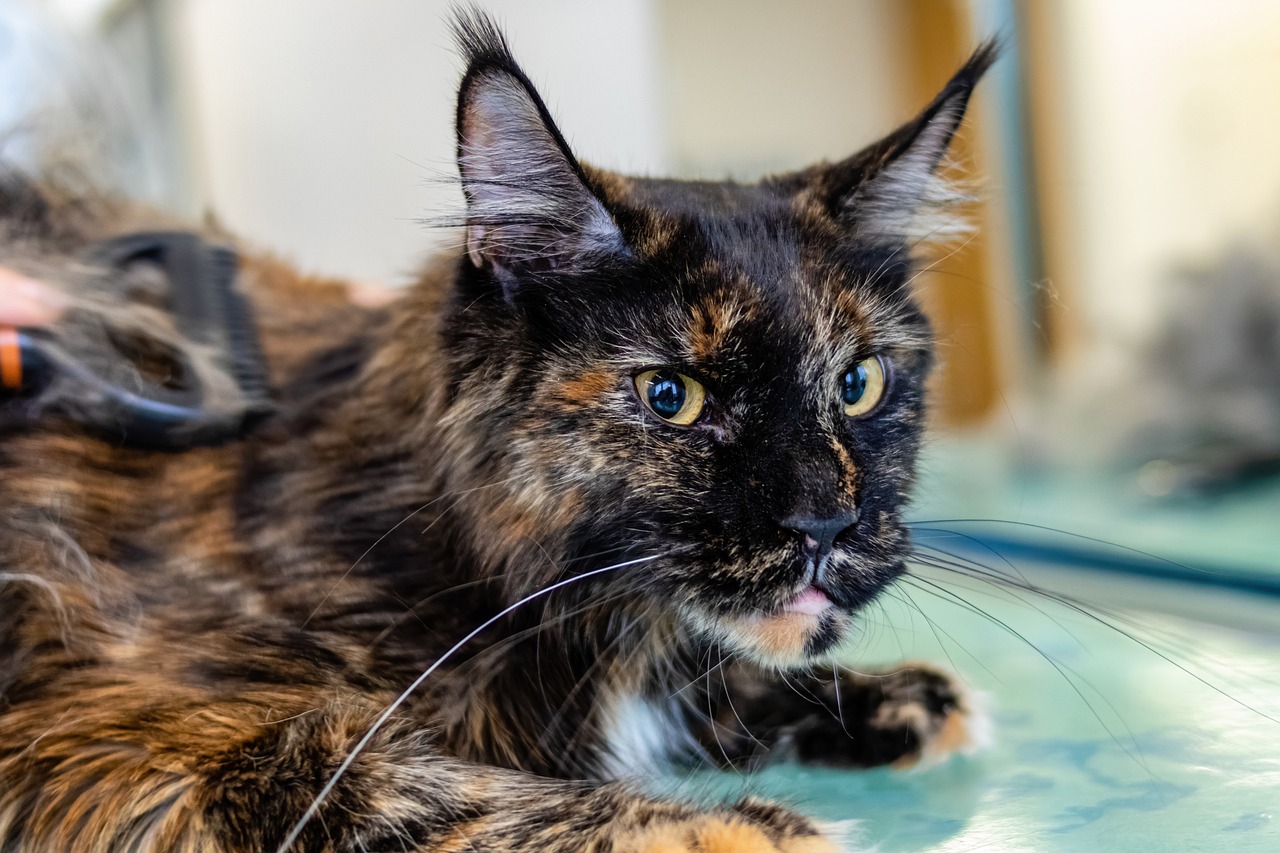
Understanding Your Pet's Grooming Needs
When it comes to grooming your furry friend, it’s essential to recognize that every pet is unique. Just like us, pets have specific grooming needs that can vary significantly based on several factors, including their breed, coat type, and overall health. Understanding these needs is crucial for selecting the right grooming class that will not only benefit your pet but also enhance your skills as a pet owner.
First and foremost, let’s talk about breed and coat type. Different breeds come with different grooming requirements. For instance, long-haired breeds like the Persian cat or Golden Retriever may require more frequent brushing and specialized grooming techniques compared to short-haired breeds like the Beagle or Boston Terrier. If you own a breed that tends to shed more, you might need to learn about specific tools and methods to manage that shedding effectively.
Additionally, the health of your pet plays a significant role in their grooming needs. Pets with skin conditions, allergies, or other health issues may require special shampoos or grooming techniques. For example, if your dog has sensitive skin, you might need to learn about hypoallergenic products that can help soothe their skin while still keeping them clean. Understanding these health-related aspects will not only help you groom your pet better but also ensure their comfort and well-being.
Moreover, consider the grooming frequency. Some pets may need grooming every few weeks, while others might only require it a few times a year. Knowing your pet's specific grooming schedule can help you determine how in-depth your grooming education needs to be. This is where a good grooming class can provide you with tailored information to suit your pet's unique requirements.
To help you get started, here’s a quick overview of the factors to consider when assessing your pet's grooming needs:
- Breed: Research your pet's breed to understand its typical grooming requirements.
- Coat Type: Determine whether your pet has a long, short, curly, or wiry coat.
- Health Issues: Be aware of any existing health conditions that may affect grooming.
- Grooming Frequency: Establish how often your pet needs to be groomed based on their coat and lifestyle.
In conclusion, understanding your pet's grooming needs is the first step in selecting the right grooming class. By taking the time to assess their breed, coat type, and health, you can ensure that you choose a class that not only enhances your skills but also contributes to your pet's overall health and happiness. So, before you dive into the world of grooming classes, make sure you have a clear picture of what your pet requires!
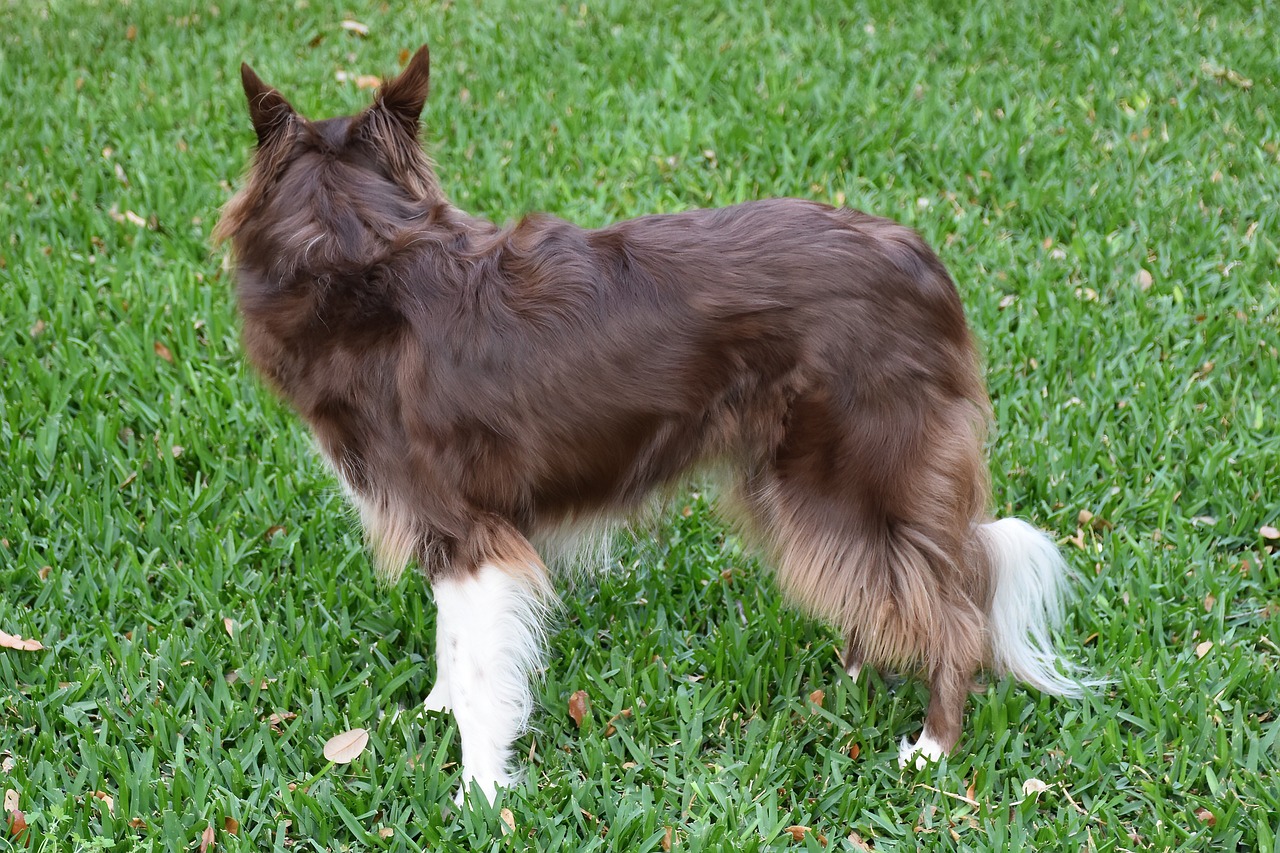
Evaluating Class Types
When it comes to grooming classes, one size definitely does not fit all. Just like your furry friend has their own unique quirks and needs, the types of grooming classes available can vary widely. Understanding these different class types is crucial for making an informed decision that aligns with both your skills and your pet's requirements. Whether you're a complete novice or have some experience under your belt, there's a class out there that’s just right for you.
Grooming classes generally fall into two main categories: basic training and advanced training. Basic classes typically cover the fundamental techniques of grooming, such as brushing, bathing, and nail trimming. These classes are perfect for pet owners who are new to grooming and want to learn how to keep their pets looking neat and tidy at home. On the other hand, advanced classes dive deeper into specialized techniques, including breed-specific cuts and advanced styling methods. If you’re looking to turn your grooming hobby into a profession or simply want to impress your friends with your pet's new look, an advanced class might be the way to go.
Another essential aspect to consider is the format of the class. You might find yourself asking, "Should I go for a group class or a private lesson?" This decision can significantly impact your learning experience. Group classes are often more social and can create a sense of community among pet owners. They provide the chance for you and your pet to interact with others, which can be beneficial for socialization. However, they can sometimes lack the individualized attention that a private lesson offers. Private lessons, while generally more expensive, allow for tailored instruction and a focused environment, making them ideal for pets with specific behavioral issues or for owners who prefer a one-on-one learning experience.
Additionally, with the rise of technology, you now have the option to choose between online and in-person classes. Online classes offer the convenience of learning from the comfort of your own home, which can be a game-changer for busy pet owners. You can pause, rewind, and revisit lessons at your own pace. However, in-person classes provide hands-on experience and immediate feedback from instructors, which can be invaluable, especially for practical skills. Ultimately, the choice between online and in-person classes will depend on your personal learning style and schedule.
To help you navigate through these choices, here’s a quick comparison table:
| Class Type | Pros | Cons |
|---|---|---|
| Group Classes |
|
|
| Private Lessons |
|
|
| Online Classes |
|
|
| In-Person Classes |
|
|
In conclusion, evaluating the type of grooming class that best suits your needs is an essential step in your grooming journey. By considering your skill level, your pet's needs, and your personal preferences regarding class format, you can make a choice that will not only enhance your grooming skills but also strengthen the bond between you and your pet.
Group vs. Private Classes
When it comes to choosing a grooming class, one of the most significant decisions you'll face is whether to opt for group classes or private lessons. Each format offers a unique set of advantages and challenges that can greatly influence your learning experience and your pet's comfort level. Think of it like choosing between a bustling café filled with chatter and a quiet library where you can focus—each has its own vibe, and your choice should reflect what suits you and your furry friend best.
Group classes can be an excellent choice for those looking to engage with other pet owners and their pets. These classes often foster a sense of community, where you can share experiences and tips with fellow participants. Imagine the camaraderie of a team sport; you’re all in it together, learning and growing alongside each other. Socialization is a crucial aspect not only for pets but for owners as well. Your pet gets to interact with other animals, which can help reduce anxiety and improve their behavior in public settings. Plus, group classes tend to be more cost-effective, making them a budget-friendly option for many.
However, group classes come with their own set of challenges. The pace of the class may not match your learning speed, and if your pet has specific behavioral issues, the group setting might not allow for the focused attention they need. In such cases, private lessons might be the way to go. With private lessons, you receive personalized instruction tailored specifically to you and your pet's needs. This is akin to having a personal trainer who crafts a workout plan just for you—it's all about maximizing your strengths and addressing your weaknesses.
In a private setting, the instructor can devote their full attention to you, allowing for a deeper understanding of grooming techniques and a more hands-on approach. This is especially beneficial for pets that may be anxious or have unique grooming challenges. You can ask questions freely and receive immediate feedback, which can significantly enhance your learning curve.
To help you weigh your options, here’s a quick comparison:
| Aspect | Group Classes | Private Lessons |
|---|---|---|
| Cost | Generally lower | Higher due to personalized attention |
| Socialization | High; pets interact with others | Low; one-on-one focus |
| Learning Pace | Varied; may not suit everyone | Customized; tailored to your needs |
| Instructor Attention | Shared among many | Full attention on you and your pet |
Ultimately, the choice between group and private classes depends on your personal preferences and your pet's needs. If you thrive in a social environment and enjoy learning alongside others, group classes might be your perfect match. On the other hand, if you prefer a more focused approach with tailored guidance, private lessons could be the better fit. Whichever you choose, the goal is to ensure a positive and enriching grooming experience for both you and your pet!
Benefits of Group Classes
Group classes can be a fantastic way to dive into the world of pet grooming, offering a blend of education and social interaction that can be both enriching and enjoyable. Imagine a vibrant room filled with fellow pet lovers, all eager to learn and share their experiences. This communal atmosphere not only fosters a sense of belonging but also provides valuable opportunities for socialization for both pets and their owners. In group classes, your pet can interact with other animals, which is essential for developing good behavior and social skills. Think of it like a puppy playdate mixed with a grooming tutorial!
Moreover, group classes often come with a cost-effective advantage. Since the instructor’s time and resources are shared among multiple students, the fees tend to be lower compared to private lessons. This makes it easier on your wallet while still providing quality instruction. You might find that you can access a wider range of topics or techniques in a group setting, as instructors often tailor their lessons to accommodate various skill levels and questions from participants.
Another significant advantage of group classes is the shared learning experience. Engaging with others allows you to see different grooming styles and techniques in action. You might pick up tips and tricks from fellow participants that you wouldn’t have encountered in a one-on-one setting. Plus, having a community of like-minded individuals can be incredibly motivating. When you see others progressing, it inspires you to push yourself and your pet toward success.
In addition, group classes often include opportunities for networking and building relationships with other pet owners. You might find a friend who shares your passion for grooming or even someone who has a similar breed and can offer insights specific to your pet's needs. The friendships formed in these classes can extend beyond the classroom, creating a support system of fellow pet enthusiasts who can share advice, tips, and experiences long after the class has ended.
In summary, group classes provide a unique blend of education, community, and cost-effectiveness that can enhance your grooming journey. They allow you to learn in a lively environment, interact with both pets and people, and gain insights that can only come from a shared experience. So, if you're looking to embark on this grooming adventure, consider the benefits of joining a group class. It could be the stepping stone to a fulfilling grooming journey for both you and your furry friend!
- What should I bring to a group grooming class? It's best to bring your pet's grooming tools, a leash, and any specific products you might want to use. Don't forget treats for positive reinforcement!
- How long do group classes usually last? Most group classes range from one to two hours, depending on the topics covered and the number of participants.
- Can my pet attend if they have behavioral issues? Yes, but it's advisable to inform the instructor beforehand so they can tailor the class to accommodate your pet's needs.
- Are group classes suitable for all pet breeds? Absolutely! Group classes are designed to cater to various breeds and grooming needs, ensuring everyone gets the most out of the experience.
Advantages of Private Lessons
When it comes to grooming your pet, private lessons can be a game-changer. Imagine having the undivided attention of an expert who tailors their teaching specifically to you and your furry friend. This personalized approach allows for a deeper understanding of your pet's unique needs, which is often not possible in a group setting. Have you ever felt lost in a crowd? That’s how many pet owners feel during group classes, where the instructor's attention is divided among several participants.
One of the most significant advantages of private lessons is the customized learning experience. Each pet is different, and their grooming requirements can vary widely based on factors like breed, age, and temperament. In a private lesson, you can focus on specific techniques that cater to your pet's grooming needs—whether it's dealing with a matted coat, teaching them to stay calm during nail trimming, or learning how to handle a pet that may be anxious about grooming tools. This focused attention can lead to quicker progress and a more confident pet.
Moreover, private lessons provide an opportunity for real-time feedback. You can ask questions as they arise and receive immediate answers, which can clarify doubts and enhance your understanding. This interaction helps build a rapport with your instructor, who can observe your technique and offer constructive criticism on the spot. It’s like having a personal trainer at the gym—someone who pushes you to do your best while ensuring you’re using the right form.
Another benefit is the flexibility that private lessons offer. You can often schedule sessions at times that work best for you, making it easier to fit grooming lessons into your busy life. Plus, if your pet has specific behavioral issues, the instructor can tailor the lesson to address those concerns directly, ensuring a more productive session.
In addition to these advantages, private lessons can also foster a stronger bond between you and your pet. As you learn together, your pet becomes accustomed to the grooming process, reducing anxiety and making future sessions smoother. This bonding experience is invaluable; after all, grooming is not just about aesthetics—it's about building trust and comfort with your pet.
In conclusion, while group classes have their perks, private lessons stand out for their personalized attention, flexibility, and immediate feedback. If you’re serious about grooming your pet effectively, investing in private lessons could be the key to unlocking a successful grooming experience for both you and your furry companion.
- How long do private grooming lessons typically last?
Private lessons usually last between 30 minutes to an hour, depending on the specific needs of your pet and the curriculum of the instructor. - Are private lessons more expensive than group classes?
Yes, private lessons generally cost more because they offer one-on-one instruction. However, the personalized attention can lead to faster results. - Can I bring my pet to the first lesson?
Most instructors encourage you to bring your pet to the first lesson so they can assess their behavior and grooming needs. - What if my pet has behavioral issues?
Private lessons are particularly beneficial for pets with behavioral issues, as instructors can tailor their approach to address specific concerns.
Online vs. In-Person Classes
When it comes to choosing between online and in-person grooming classes, it's essential to weigh the pros and cons of each format. Both options have unique advantages that cater to different lifestyles and learning preferences. For some, the flexibility and convenience of online classes may be a game-changer, while others might thrive in the hands-on environment of in-person training.
Online classes have surged in popularity, especially in recent years. They allow you to learn at your own pace, making it easier to fit education into your busy schedule. Imagine being able to attend a class in your pajamas while sipping coffee! This flexibility can be particularly appealing for pet owners with hectic lives. Additionally, online classes often provide access to a broader range of instructors and resources, allowing you to learn from experts across the globe.
However, while online classes offer convenience, they may lack the immediate feedback and hands-on experience that in-person classes provide. Grooming is a skill that often requires physical practice, and some learners find it challenging to grasp techniques without direct supervision. In-person classes allow for real-time interaction with instructors and fellow students, which can enhance the learning experience. Plus, your pet gets the chance to socialize with others, which is invaluable for their development.
To help you decide, here’s a quick comparison of the two formats:
| Aspect | Online Classes | In-Person Classes |
|---|---|---|
| Flexibility | High - Learn at your own pace | Low - Fixed schedule |
| Cost | Often more affordable | Can be more expensive |
| Social Interaction | Limited to virtual forums | Direct interaction with peers and instructors |
| Hands-On Experience | Less practical application | Immediate feedback and hands-on practice |
Ultimately, the choice between online and in-person classes boils down to your personal preferences and your pet's needs. If you thrive in a structured environment and value face-to-face interaction, in-person classes might be your best bet. On the other hand, if you appreciate the freedom to learn on your own terms, online classes could be the perfect fit. Remember, there’s no one-size-fits-all solution; it’s all about finding what works best for you and your furry friend!
- Can I switch from online to in-person classes later? Yes, many programs allow you to transition between formats depending on your needs.
- Are online classes less effective? Not necessarily! The effectiveness depends on the quality of the course and your commitment to learning.
- What if my pet doesn't do well in a virtual class? Consider starting with an in-person class to gauge your pet's comfort level.

Assessing Instructor Qualifications
When it comes to choosing the right grooming class for you and your furry friend, one of the most critical aspects to consider is the qualifications of the instructor. An instructor's background can significantly influence the quality of education you and your pet receive. So, how do you ensure that you're selecting a class led by a competent and experienced instructor? Well, it all starts with research!
First and foremost, look for instructors who have recognized certifications in grooming. Certifications from reputable organizations not only show that the instructor has undergone formal training but also that they are committed to maintaining high standards in their practice. For example, instructors certified by the National Dog Groomers Association of America (NDGAA) or similar organizations have demonstrated their expertise through rigorous testing and continuing education.
Additionally, consider the experience of the instructor. An instructor with years of hands-on grooming experience is likely to provide valuable insights that can only be gained through practice. Ask about their experience with different breeds and coat types, as this can greatly affect the grooming techniques they teach. For instance, grooming a Poodle is quite different from grooming a Labrador, and having an instructor who understands these nuances can enhance your learning experience.
Another crucial factor to evaluate is the teaching style of the instructor. Every educator has a unique approach, and it's important to find one that resonates with your learning preferences. Some instructors might focus on a hands-on approach, allowing you to practice techniques in real-time, while others may prefer a more theoretical style, emphasizing the principles behind grooming. Consider what works best for you and your pet, and don’t be afraid to ask for a trial class to get a feel for the instructor's teaching methods.
To help you assess potential instructors, here’s a quick table summarizing key qualifications to look for:
| Qualification | Importance |
|---|---|
| Recognized Certifications | Ensures formal training and knowledge of grooming standards |
| Years of Experience | Provides practical insights and techniques based on real-world scenarios |
| Teaching Style | Influences how effectively you learn and apply grooming skills |
Ultimately, the goal is to find an instructor who not only possesses the right qualifications but also creates an engaging and supportive learning environment. Remember, a good instructor will not just teach you how to groom but will also inspire confidence in your abilities, making the grooming experience enjoyable for both you and your pet.
- What qualifications should I look for in a grooming instructor?
Look for recognized certifications, extensive experience, and a teaching style that matches your learning preferences. - How can I assess an instructor's teaching style?
Consider attending a trial class or asking for feedback from previous students to gauge their teaching methods. - Are online grooming classes as effective as in-person ones?
It depends on your learning style. Online classes offer flexibility, while in-person classes provide hands-on experience.
Certifications and Experience
When it comes to choosing the right grooming class, the certifications and experience of the instructor play a pivotal role in your overall learning experience. Think about it: would you want to learn from someone who has just picked up a pair of clippers or from a seasoned pro who has spent years honing their skills? The latter not only brings practical knowledge but also a wealth of insights that can only come from years of experience working with various breeds and temperaments.
Instructors with recognized certifications, such as those from the National Dog Groomers Association of America (NDGAA) or similar organizations, indicate a level of professionalism and commitment to their craft. These certifications often require passing rigorous exams and demonstrating proficiency in various grooming techniques. This means that when you enroll in a class led by a certified instructor, you are likely to receive quality education that adheres to industry standards.
Moreover, an instructor’s experience can significantly affect the learning curve. For instance, an instructor who has worked with a wide range of breeds will understand the specific grooming needs associated with each type. They can share tips and tricks that only come from hands-on experience, making your learning process smoother and more effective. It’s like learning to ride a bike: having someone who knows how to balance and steer can make all the difference between falling over and cruising down the street with confidence!
Here’s a quick breakdown of what to look for in an instructor:
| Criteria | Why It Matters |
|---|---|
| Certifications | Indicates professionalism and adherence to industry standards. |
| Years of Experience | More experience often means better skills and techniques. |
| Specialization | Instructors who specialize in specific breeds can provide tailored advice. |
| Teaching Style | A compatible teaching style can enhance your learning experience. |
In conclusion, when evaluating potential grooming classes, take the time to research the instructor’s background. Look for reviews or ask for recommendations from fellow pet owners. Remember, the right instructor can make your grooming journey not only educational but also enjoyable, setting you and your pet up for success!
Teaching Style and Philosophy
When it comes to selecting a grooming class, one of the most critical aspects to consider is the teaching style and philosophy of the instructor. Each teacher brings their own unique approach, which can greatly influence your learning experience. Some instructors may adopt a more hands-on approach, encouraging students to dive right in and practice grooming techniques on their pets. This method can be particularly effective for those who learn best through doing rather than just listening. On the other hand, some instructors might prefer a more theoretical approach, focusing on the reasoning behind different grooming techniques and the anatomy of various breeds. Understanding which style resonates with you can help ensure a more fulfilling experience.
Additionally, the philosophy behind the instructor's teaching can play a significant role in your overall satisfaction. For instance, some instructors may prioritize positive reinforcement techniques, which can create a more enjoyable and stress-free environment for both you and your pet. This approach not only builds trust between you and your pet but also encourages better behavior during grooming sessions. Conversely, instructors who emphasize strict discipline may not align with your values, especially if you prefer a more compassionate and understanding method of training.
To help you assess the teaching styles and philosophies of potential instructors, consider the following questions:
- What methods do they use to teach grooming techniques?
- How do they handle behavioral issues during classes?
- Do they encourage questions and open discussions?
- What is their approach to building a bond between pet and owner?
Moreover, don’t hesitate to reach out to former students or check online reviews to get a sense of how others have experienced their teaching methods. Remember, finding the right instructor can make all the difference in your grooming journey. It’s not just about learning to groom; it’s about developing a deeper understanding of your pet's needs and building a lasting bond.
1. How do I know if a grooming class is suitable for my pet?
You should consider your pet's breed, coat type, and any specific behavioral issues. Research the class curriculum to ensure it aligns with your pet's needs.
2. What should I look for in a grooming instructor?
Look for instructors with relevant certifications, experience, and a teaching style that matches your learning preferences.
3. Are online grooming classes effective?
Yes, online classes can be effective, especially if they offer interactive components like live demonstrations and Q&A sessions.
4. How can I budget for grooming classes?
Consider class fees, potential hidden costs, and any additional materials you may need to purchase. Research multiple options to find one that fits your budget.
5. What if my pet has specific behavioral issues?
In such cases, private lessons may be more beneficial, as they allow for personalized attention and tailored instruction to address your pet's unique challenges.

Cost Considerations
When diving into the world of grooming classes, one of the most important aspects to consider is the cost. Grooming classes can vary dramatically in price, and understanding these costs can help you make a decision that fits your budget while still ensuring quality education for both you and your pet. It's not just about the sticker price; it’s about what you get for your money. So, let’s break it down a bit.
First off, you’ll find that class fees can fluctuate based on several factors, including the location of the class, the experience of the instructor, and the duration of the course. For instance, a class in a metropolitan area might be pricier than one in a rural setting. Similarly, an instructor with years of experience and certifications may charge more than someone who is just starting out. However, it’s crucial to remember that higher costs don't always equate to better quality. Sometimes, you might find a gem of a class at a reasonable price.
| Factor | Impact on Cost |
|---|---|
| Location | Urban areas tend to have higher fees than rural ones. |
| Instructor Experience | More experienced instructors usually charge higher rates. |
| Class Duration | Longer courses often come with a higher price tag. |
Another aspect to consider is the hidden costs that might not be immediately apparent. For example, some classes might require you to purchase specific grooming tools or materials that can add to your overall expense. It's always a good idea to ask about these potential extra costs upfront. You wouldn’t want to sign up for a class only to find out later that you need to shell out additional cash for equipment that you didn’t budget for. Here are some common hidden costs to keep in mind:
- Equipment fees: Some classes may require you to buy or rent grooming tools.
- Additional materials: Look out for costs related to grooming products or manuals.
- Travel expenses: If the class is far from home, factor in gas or public transport fees.
In conclusion, budgeting for grooming classes requires a bit of homework. By understanding the various factors that influence costs and being aware of potential hidden fees, you can make an informed decision that ensures both you and your pet get the best grooming education possible without breaking the bank.
Q1: How much should I expect to pay for a grooming class?
A1: Prices can range from $50 to several hundred dollars depending on the factors mentioned earlier, such as location and instructor experience.
Q2: Are there any ongoing costs after the initial class fee?
A2: Yes, you may need to purchase grooming tools and products, which can add to your expenses.
Q3: Can I find affordable grooming classes?
A3: Absolutely! Look for local community centers or pet shops that may offer reasonably priced classes.
Q4: What if I can’t afford a class right now?
A4: Consider online resources or free tutorials available on platforms like YouTube to start learning basic grooming techniques.
Understanding Class Fees
When it comes to enrolling in a grooming class, one of the most crucial factors to consider is the class fees. These fees can vary significantly based on a number of factors, making it essential to understand what you’re paying for. First and foremost, the location of the class can greatly influence the cost. Urban areas often have higher fees due to increased demand and higher operational costs. In contrast, classes in rural areas may be more affordable, but they might also offer fewer options.
Another key factor is the experience and qualifications of the instructor. Instructors with advanced certifications or extensive experience typically charge higher fees, but the investment can be worthwhile if you’re looking for quality education. It’s not just about learning how to groom your pet; it’s about gaining insights and techniques that can only come from seasoned professionals.
Class duration also plays a significant role in pricing. A single session may cost less than a multi-week course, but consider what you’re getting for your money. Longer courses often provide a more comprehensive education, allowing for deeper learning and practice. Here’s a quick breakdown of what you might expect in terms of fees:
| Class Type | Duration | Average Cost |
|---|---|---|
| Basic Grooming Class | 4 weeks | $200 - $400 |
| Advanced Grooming Class | 8 weeks | $400 - $800 |
| Private Lessons | 1 hour | $50 - $150 |
| Online Course | Self-paced | $100 - $300 |
While understanding class fees, it’s also vital to be aware of potential hidden costs. These can include charges for grooming supplies, equipment rentals, or additional materials required for the class. For instance, some classes might require you to purchase specific grooming tools or products, which can add to your overall expenses. Therefore, always ask about any extra costs when inquiring about a class.
In summary, being well-informed about class fees can help you make a more informed decision that aligns with your budget and goals. By understanding the various factors that contribute to pricing, you can ensure that you choose a grooming class that not only fits your financial situation but also meets your educational needs.
- What is the average cost of grooming classes? The average cost can range from $200 for basic classes to over $800 for advanced training.
- Are there any hidden fees I should be aware of? Yes, be cautious of additional fees for supplies, equipment, or materials.
- Is it worth paying for a private lesson? If you have specific needs or want personalized attention, private lessons can be very beneficial.
- How do I know if an online class is right for me? Consider your learning style; if you prefer flexibility and self-paced learning, online classes might be ideal.
Hidden Costs to Watch For
When embarking on your grooming class journey, it’s crucial to be aware of the hidden costs that can sneak up on you like a cat in the night. While the advertised price of a class may seem reasonable, there are often additional expenses that can add up quickly, making your overall investment significantly higher than anticipated. For instance, many grooming classes may not include the cost of essential equipment, such as grooming tools, shampoos, or even training materials.
To give you a clearer picture, consider the following potential hidden costs:
- Equipment Fees: Some classes may require you to purchase specific tools or equipment that are not included in the tuition. This can range from clippers to brushes, and the costs can vary widely.
- Materials and Supplies: You might need to buy additional grooming supplies, such as shampoos, conditioners, and nail clippers, which can quickly add to your expenses.
- Travel Costs: If you’re attending in-person classes, don’t forget to factor in transportation costs. Whether it's gas, public transport, or parking fees, these can accumulate over time.
- Certification Fees: If the course offers a certification at the end, there might be an extra fee associated with that. It’s wise to ask upfront about any certification costs.
Moreover, some classes might have a material fee that covers handouts, books, or other resources. These fees can vary based on the instructor's approach or the curriculum's depth. Always ask for a detailed breakdown of what your tuition includes and what it doesn’t. This way, you can avoid any unpleasant surprises that could derail your grooming education journey.
In the end, being informed about these hidden costs can help you budget more effectively and ensure that you’re not caught off guard. Think of it as preparing for a road trip; you wouldn’t just fill up your tank and hit the road without considering tolls, food, and lodging, right? Similarly, being aware of all the potential expenses associated with grooming classes will allow you to navigate your educational path with confidence and clarity.
Q: What should I look for in a grooming class?
A: Look for classes that cater to your pet's specific needs, consider the instructor's qualifications, and evaluate the class format that suits your learning style.
Q: Are online grooming classes as effective as in-person ones?
A: Online classes can be very effective, especially if they offer interactive elements. However, in-person classes provide hands-on experience that can be beneficial for practical skills.
Q: How can I ensure I’m not paying hidden fees?
A: Always request a detailed breakdown of costs before enrolling. Ask about any additional fees for materials, equipment, or certification.
Q: What if my pet has behavioral issues?
A: Consider private lessons or classes that specialize in working with pets that have specific behavioral challenges to ensure a positive learning experience for both you and your pet.
Frequently Asked Questions
- What should I consider when choosing a grooming class for my pet?
When selecting a grooming class, consider your pet's specific grooming needs based on their breed and coat type. Additionally, think about your own experience level and what you hope to achieve from the class. This will help you find a course that is well-suited to both you and your furry friend.
- Are group classes better than private lessons?
It really depends on your learning style and your pet's personality! Group classes are great for socialization and can be more budget-friendly, while private lessons offer personalized attention and cater to pets with unique behavioral issues. Evaluate what environment would be most beneficial for you and your pet.
- How do I know if an instructor is qualified?
Look for instructors with recognized certifications and relevant experience in pet grooming. Research their background and teaching philosophy to ensure they align with your learning style and can provide the quality education you’re looking for.
- What are some common hidden costs in grooming classes?
Be on the lookout for potential hidden costs such as equipment fees, grooming supplies, or additional materials that may not be included in the initial class fee. Understanding these costs upfront can help you avoid unexpected expenses down the line.
- Can I take grooming classes online?
Absolutely! Online grooming classes have become increasingly popular and can be a convenient option for many pet owners. They allow you to learn at your own pace and from the comfort of your home, but make sure to choose a reputable course that offers comprehensive training.



